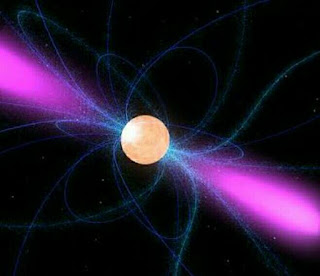Neutron stars- the fastest spinning star in space|Technospace
A celestial object of very small radius (typically 30 km) and very high density, composed predominantly of closely packed neutrons are called Neutron Star. Neutron stars are thought to form by the gravitational collapse of the remnant of a massive star after a supernova explosion, provided that the star is insufficiently massive to produce a black hole.
Size
A neutron star is about 20 km in diameter and has the mass of about 1.4 times that of our Sun. This means that a neutron star is so dense that on Earth, one teaspoonful would weigh a billion tons.
Magnetic field
In a typical neutron star, the magnetic field is trillions of times that of the Earth's magnetic field; however, in a magnetar, the magnetic field is another 1000 times stronger. In all neutron stars, the crust of the star is locked together with the magnetic field so that any change in one affects the other.
Temperature
The temperature inside a newly formed neutron star is from around 100,000,000,000 to 1,000,000,000,000 kelvin. However, the huge number of neutrinos it emits carry away so much energy that the temperature of an isolated neutron star falls within a few years to around 106 kelvin.
Core
Neutron stars comprise one of the possible evolutionary end-points of high mass stars. Once the core of the star has completely burned to iron, energy production stops and the core rapidly collapses, squeezing electrons and protons together to form neutrons and neutrinos.



Comments
Post a Comment